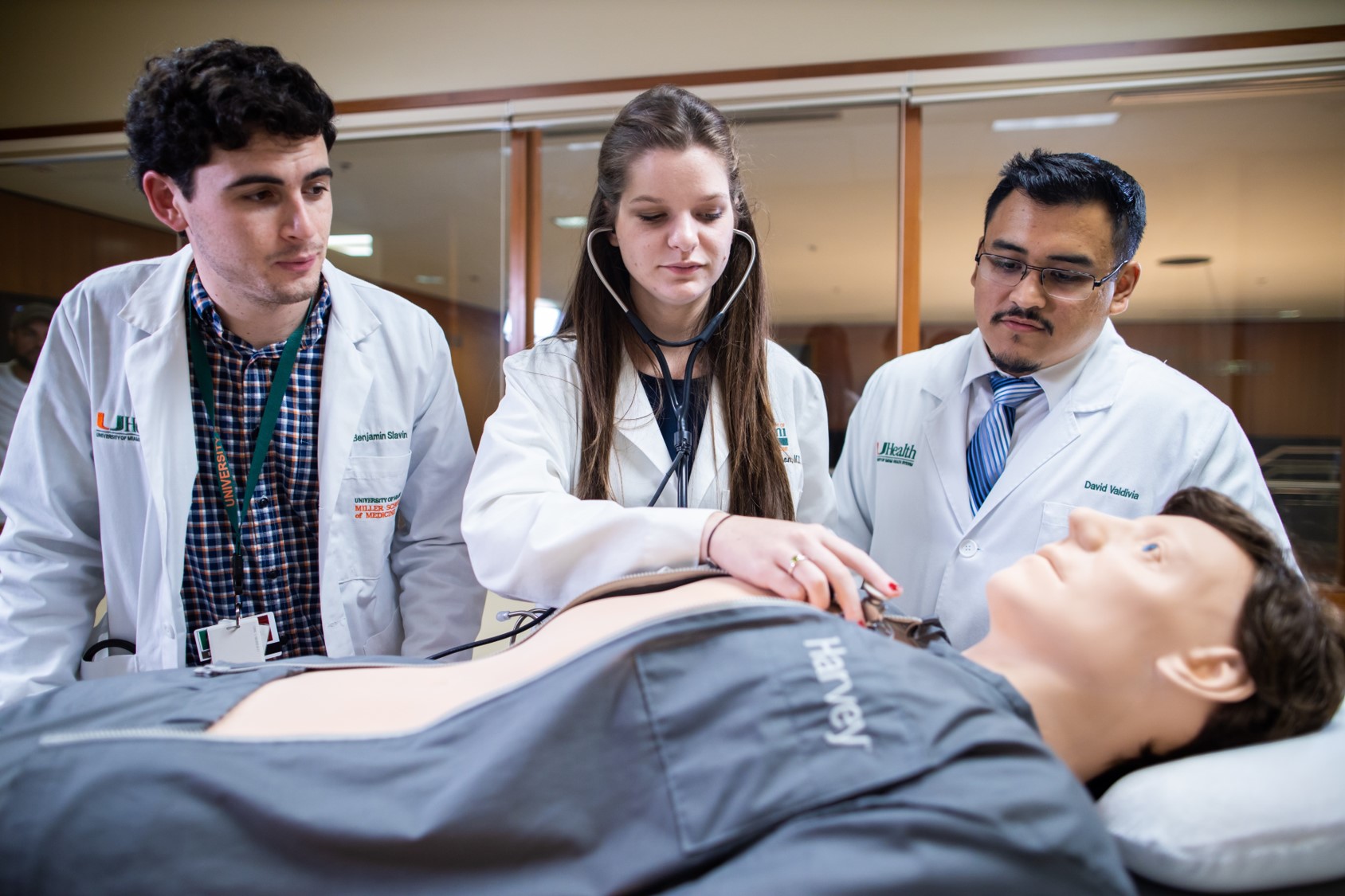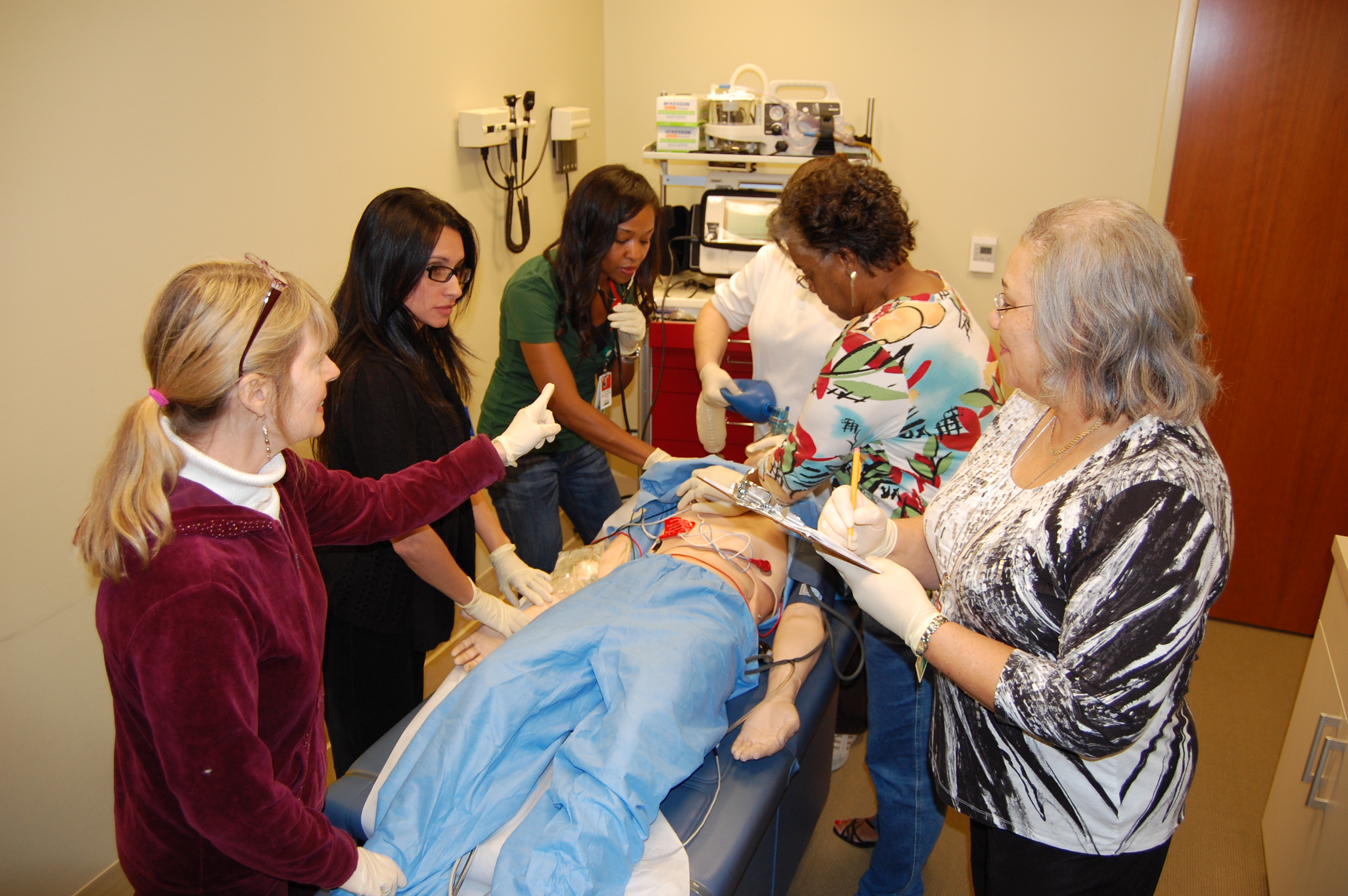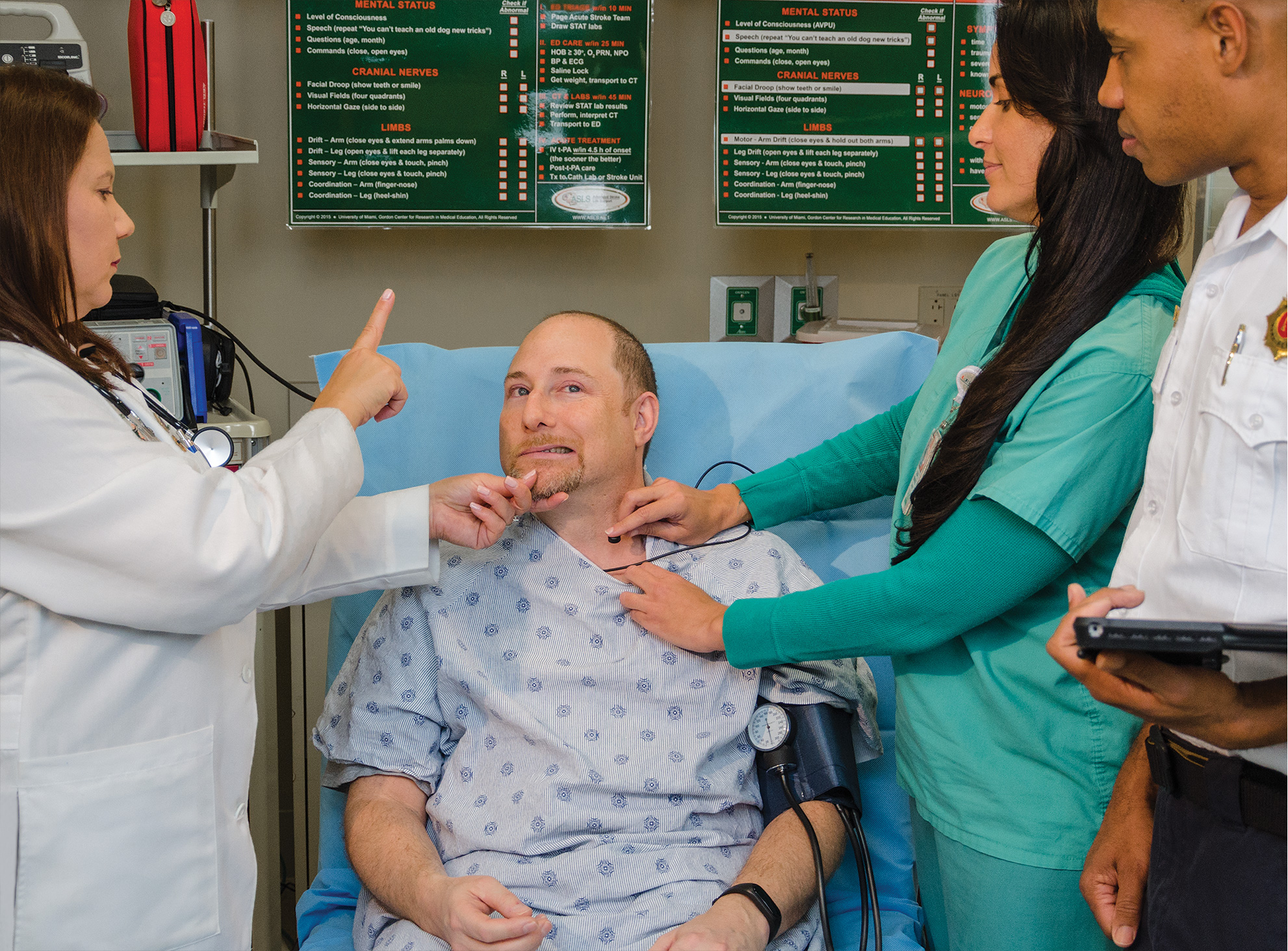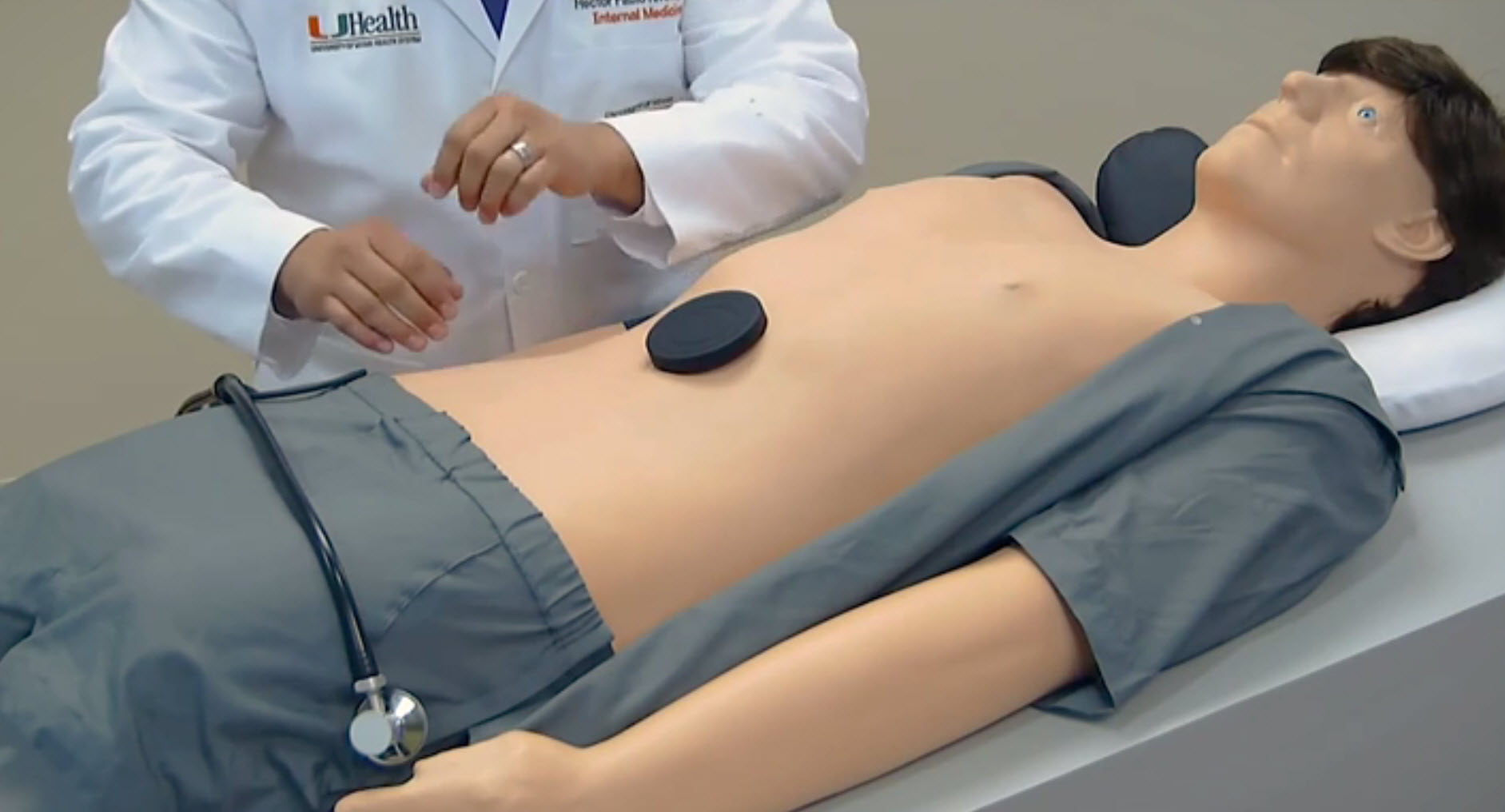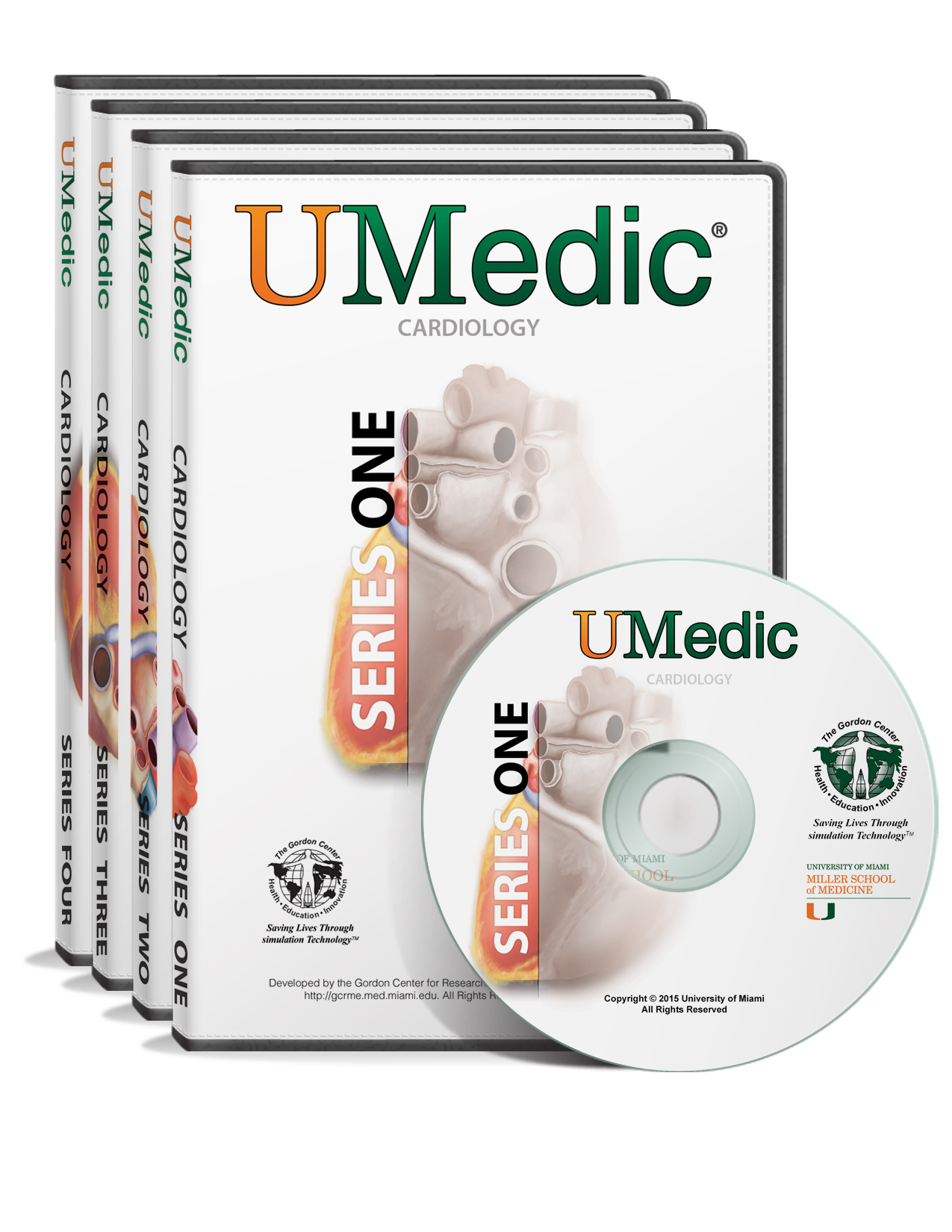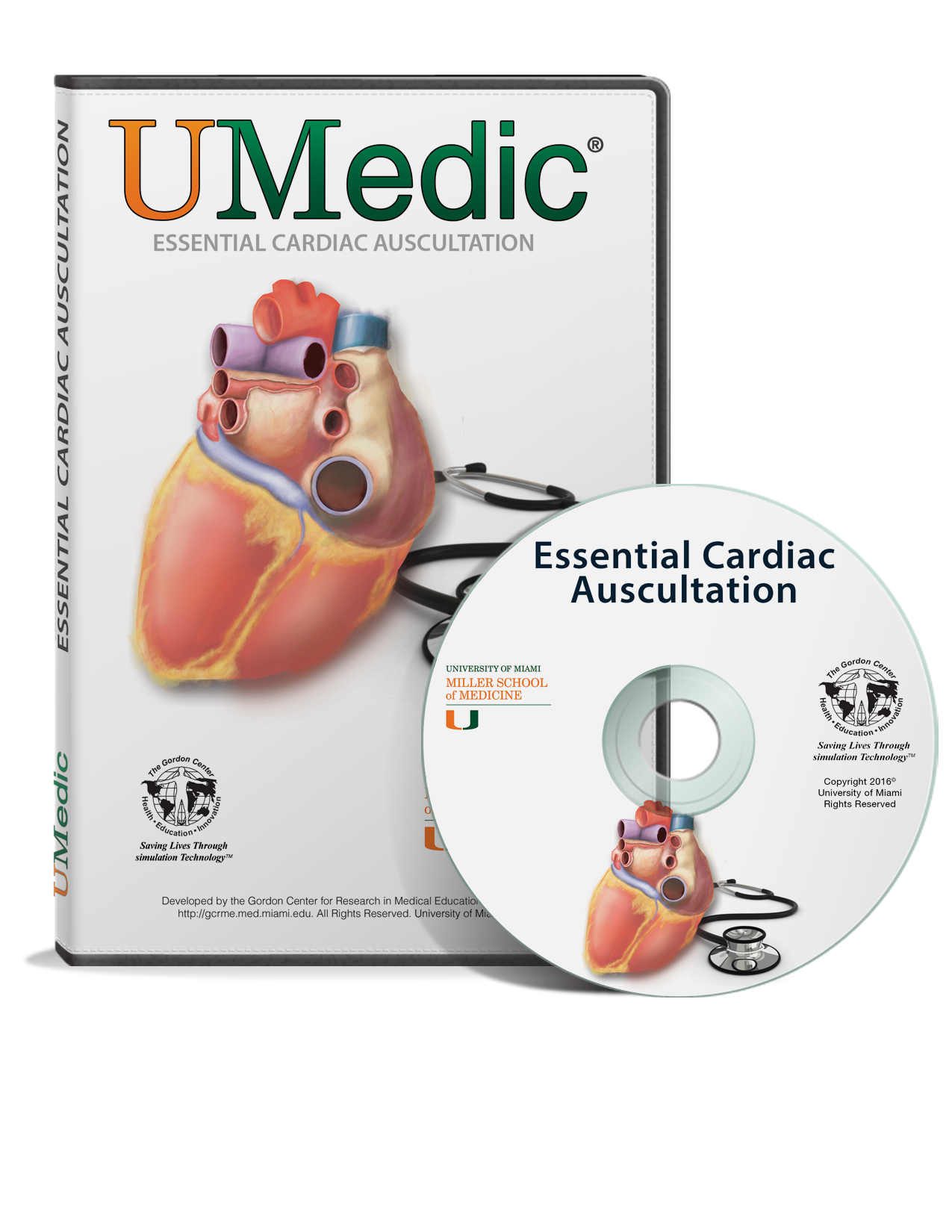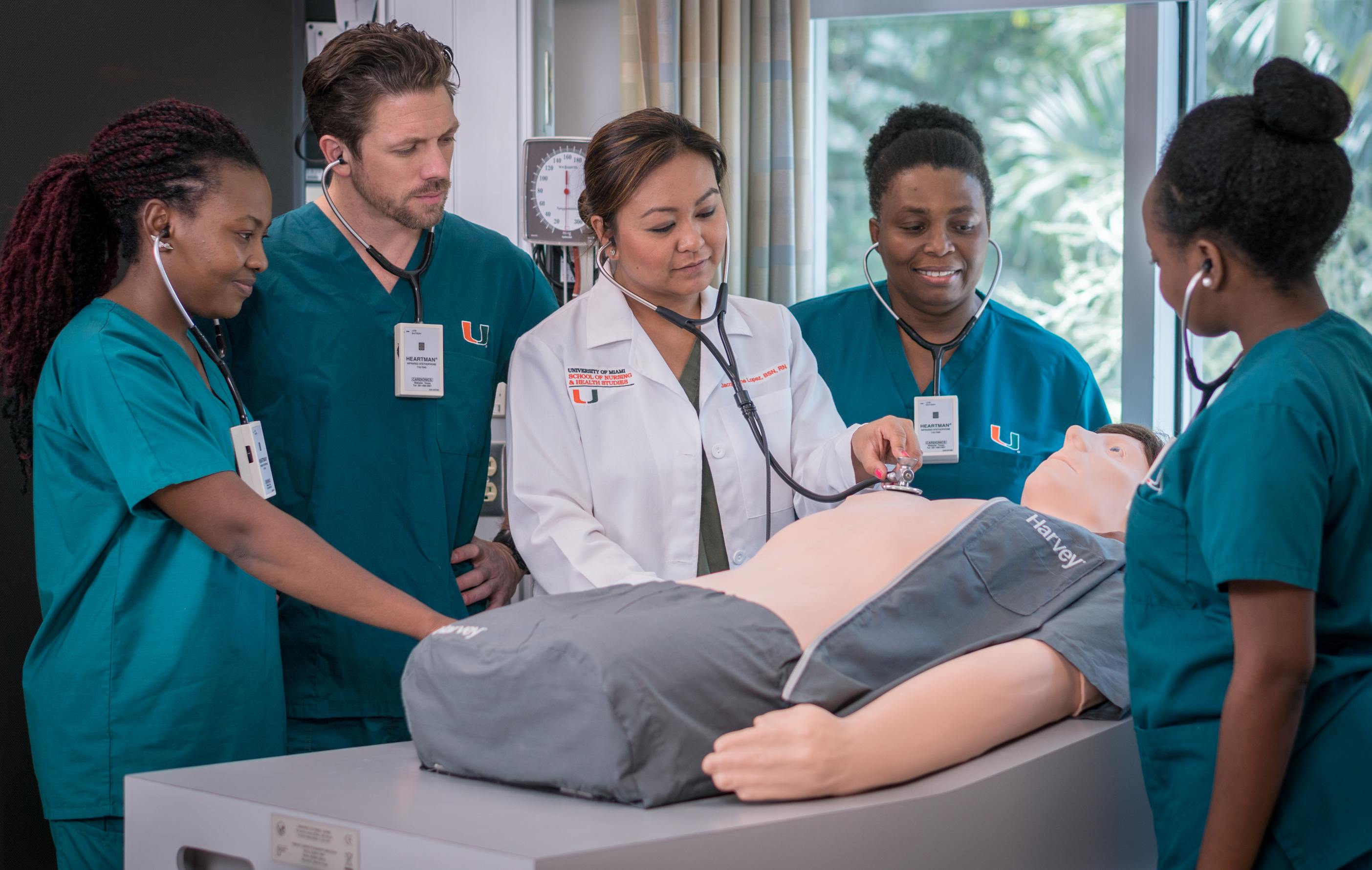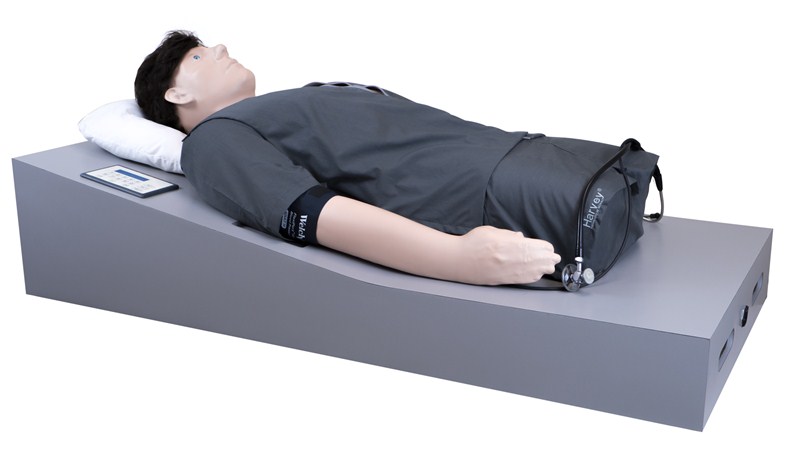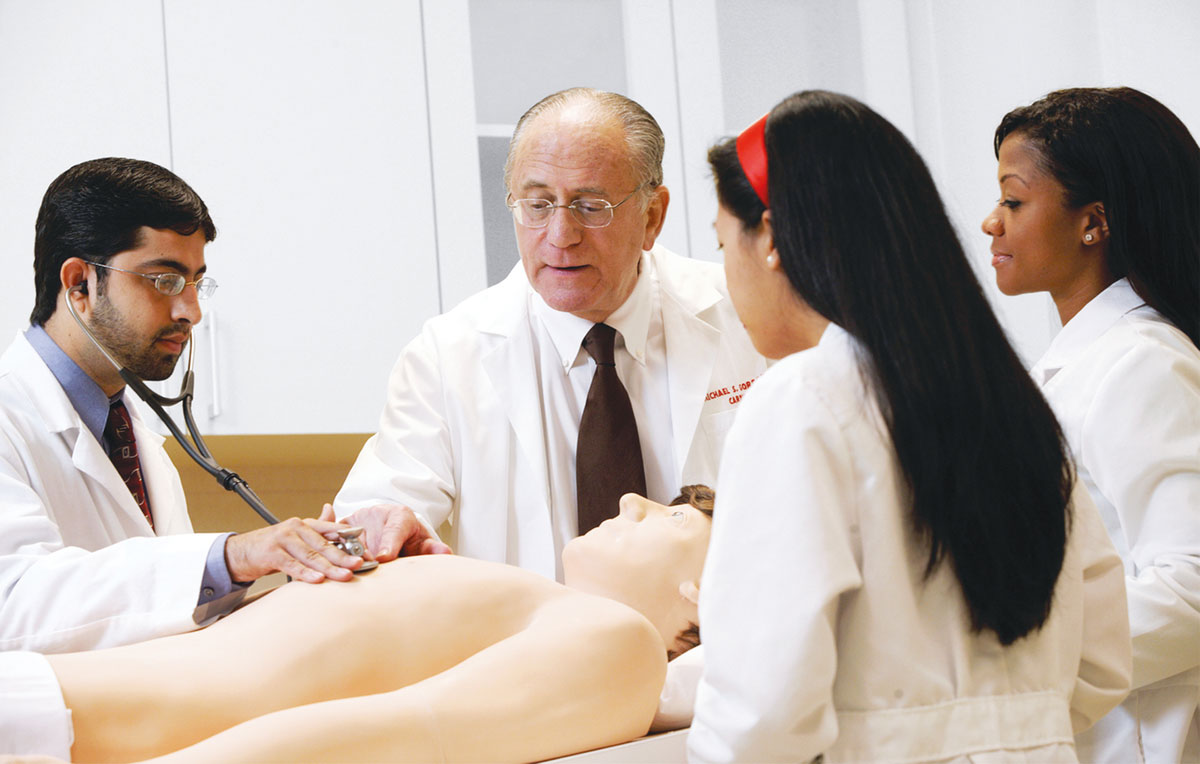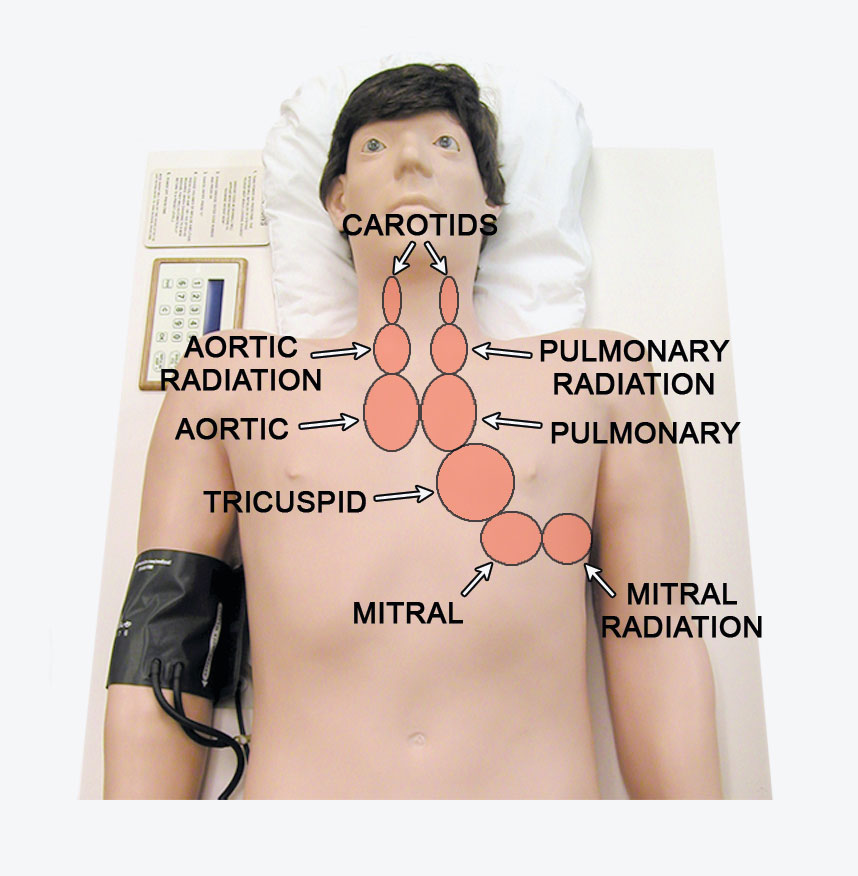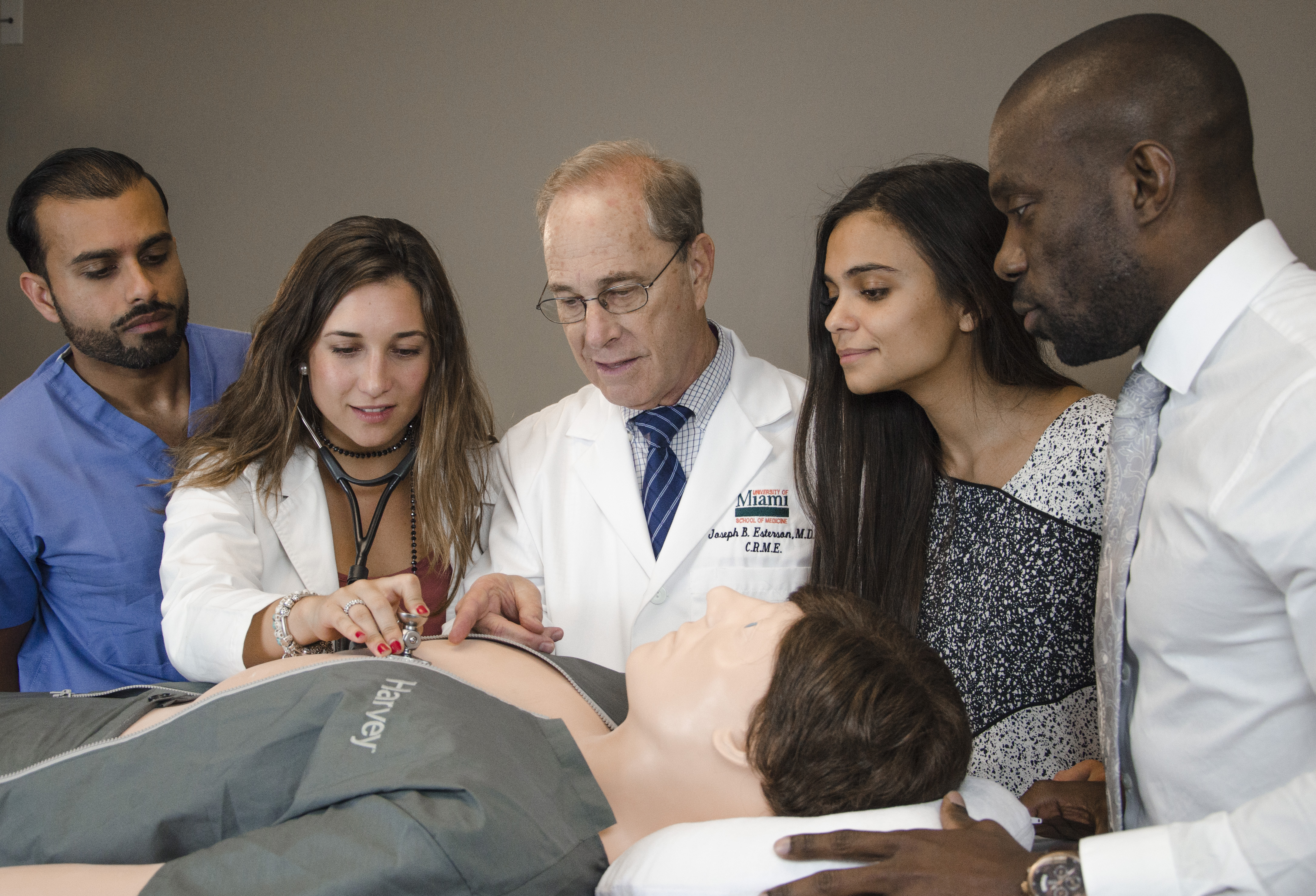
Zaprojektowany do szkolenia w każdych warunkach
Symulator Harvey jest urządzeniem przenosnym i może być użyty wszędzie tam, gdzie badani są pacjenci. Zaopatrzeni w radiowe słuchawki douszne uczestnicy szkolenia mogą w niewielkich grupach uczyć się bez pomocy instruktora, korzystając z zestawów slajdów lub systemu UMedic. Pomieszczenie przeznaczone do pracy z Harveyem powinno odpowiadać wielkością małej sali szpitalnej, aby umożliwić symulację obchodu lekarskiego.
Harvey może być również używany w pracowniach kształcenia umiejętności klinicznych, ośrodkach szkolenia symulacyjnego lub w trakcie szkoleń z udziałem pacjentów standaryzowanych. Większe grupy mogą uczyć się w sali wykładowej - uczestnicy słyszą wtedy w słuchawkach dźwieki odsłuchowe, a na monitorze obserwują wyniki innych badań.
Główna lokalizacja powinna przede wszystkim zapewniać dogodny dostęp zarówno uczestnikom szkolenia, jak i osobie prowadzącej. Choć symulator Harvey jest pomyślany jako urządzenie do samodzielnej nauki, obecność w pobliżu kompetentnych dydaktyków i pracowników zwiększa szansę powodzenia programu.

